How To Register Large Images In Matlab
MATLAB - Plotting
To plot the graph of a function, you need to have the following steps −
-
Define 10, by specifying the range of values for the variable x, for which the office is to exist plotted
-
Define the role, y = f(10)
-
Phone call the plot command, equally plot(x, y)
Following case would demonstrate the concept. Let u.s.a. plot the simple function y = ten for the range of values for x from 0 to 100, with an increase of 5.
Create a script file and type the following code −
x = [0:5:100]; y = x; plot(x, y)
When you lot run the file, MATLAB displays the following plot −
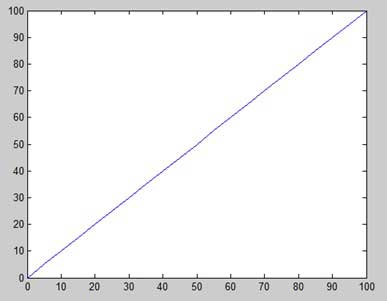
Let united states accept ane more than example to plot the office y = x2. In this example, we will draw 2 graphs with the same function, but in second time, we will reduce the value of increase. Delight annotation that as we decrease the increment, the graph becomes smoother.
Create a script file and type the post-obit lawmaking −
ten = [1 2 3 4 5 6 7 8 9 x]; x = [-100:20:100]; y = x.^2; plot(x, y)
When you lot run the file, MATLAB displays the post-obit plot −
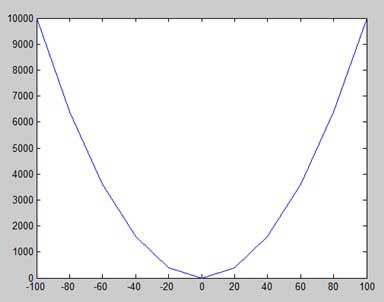
Change the lawmaking file a trivial, reduce the increase to five −
ten = [-100:5:100]; y = 10.^ii; plot(ten, y)
MATLAB draws a smoother graph −
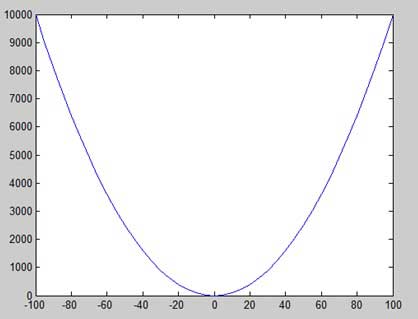
Calculation Championship, Labels, Filigree Lines and Scaling on the Graph
MATLAB allows you to add championship, labels along the x-axis and y-axis, grid lines and also to suit the axes to spruce up the graph.
-
The xlabel and ylabel commands generate labels along ten-axis and y-axis.
-
The championship command allows you lot to put a championship on the graph.
-
The filigree on command allows you to put the grid lines on the graph.
-
The axis equal control allows generating the plot with the same scale factors and the spaces on both axes.
-
The axis square command generates a square plot.
Instance
Create a script file and type the following code −
10 = [0:0.01:x]; y = sin(10); plot(x, y), xlabel('x'), ylabel('Sin(x)'), title('Sin(x) Graph'), grid on, axis equal MATLAB generates the post-obit graph −
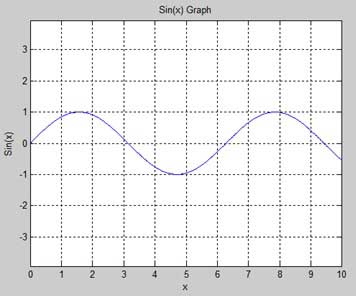
Cartoon Multiple Functions on the Same Graph
You can depict multiple graphs on the same plot. The following example demonstrates the concept −
Instance
Create a script file and type the post-obit code −
x = [0 : 0.01: 10]; y = sin(x); g = cos(10); plot(x, y, 10, chiliad, '.-'), legend('Sin(ten)', 'Cos(10)') MATLAB generates the following graph −
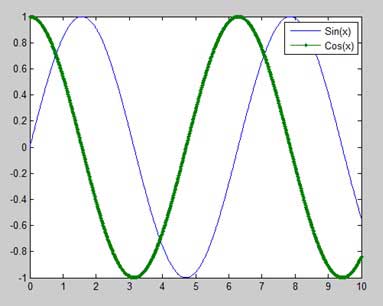
Setting Colors on Graph
MATLAB provides eight basic color options for cartoon graphs. The post-obit table shows the colors and their codes −
| Code | Colour |
|---|---|
| w | White |
| k | Black |
| b | Blueish |
| r | Red |
| c | Cyan |
| g | Green |
| m | Magenta |
| y | Yellow |
Example
Let us draw the graph of ii polynomials
-
f(x) = 3x4 + 2xiii+ 7x2 + 2x + 9 and
-
yard(x) = 5x3 + 9x + ii
Create a script file and type the post-obit code −
x = [-10 : 0.01: 10]; y = 3*ten.^4 + two * ten.^3 + 7 * x.^two + ii * ten + 9; thousand = 5 * 10.^3 + ix * x + two; plot(ten, y, 'r', x, m, 'm')
When you lot run the file, MATLAB generates the following graph −
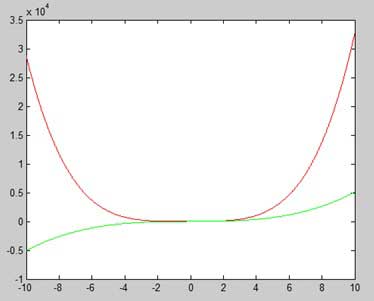
Setting Axis Scales
The centrality command allows you to set the axis scales. You can provide minimum and maximum values for 10 and y axes using the axis command in the following way −
centrality ( [xmin xmax ymin ymax] )
The following example shows this −
Example
Create a script file and blazon the following lawmaking −
10 = [0 : 0.01: 10]; y = exp(-x).* sin(2*x + 3); plot(x, y), centrality([0 10 -1 1])
When you lot run the file, MATLAB generates the following graph −
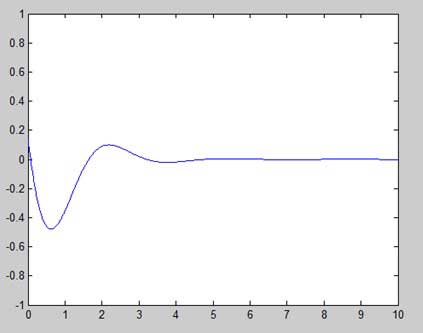
Generating Sub-Plots
When yous create an array of plots in the aforementioned figure, each of these plots is called a subplot. The subplot command is used for creating subplots.
Syntax for the command is −
subplot(m, n, p)
where, m and n are the number of rows and columns of the plot array and p specifies where to put a particular plot.
Each plot created with the subplot command can accept its own characteristics. Post-obit example demonstrates the concept −
Example
Let united states of america generate ii plots −
y = e−1.5xsin(10x)
y = e−2xsin(10x)
Create a script file and type the following code −
x = [0:0.01:five]; y = exp(-1.5*ten).*sin(10*ten); subplot(1,2,ane) plot(x,y), xlabel('x'),ylabel('exp(–1.5x)*sin(10x)'),axis([0 5 -1 1]) y = exp(-2*x).*sin(10*x); subplot(ane,2,2) plot(10,y),xlabel('10'),ylabel('exp(–2x)*sin(10x)'),centrality([0 5 -ane one]) When you run the file, MATLAB generates the following graph −
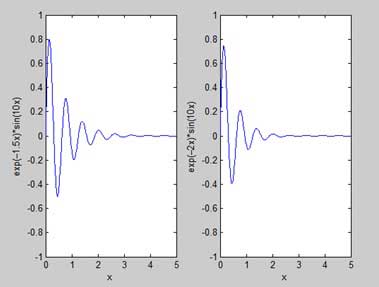
Useful Video Courses

Video

Video

Video

Video

Video

Video
Source: https://www.tutorialspoint.com/matlab/matlab_plotting.htm
Posted by: richardsonnotheireat1971.blogspot.com


0 Response to "How To Register Large Images In Matlab"
Post a Comment